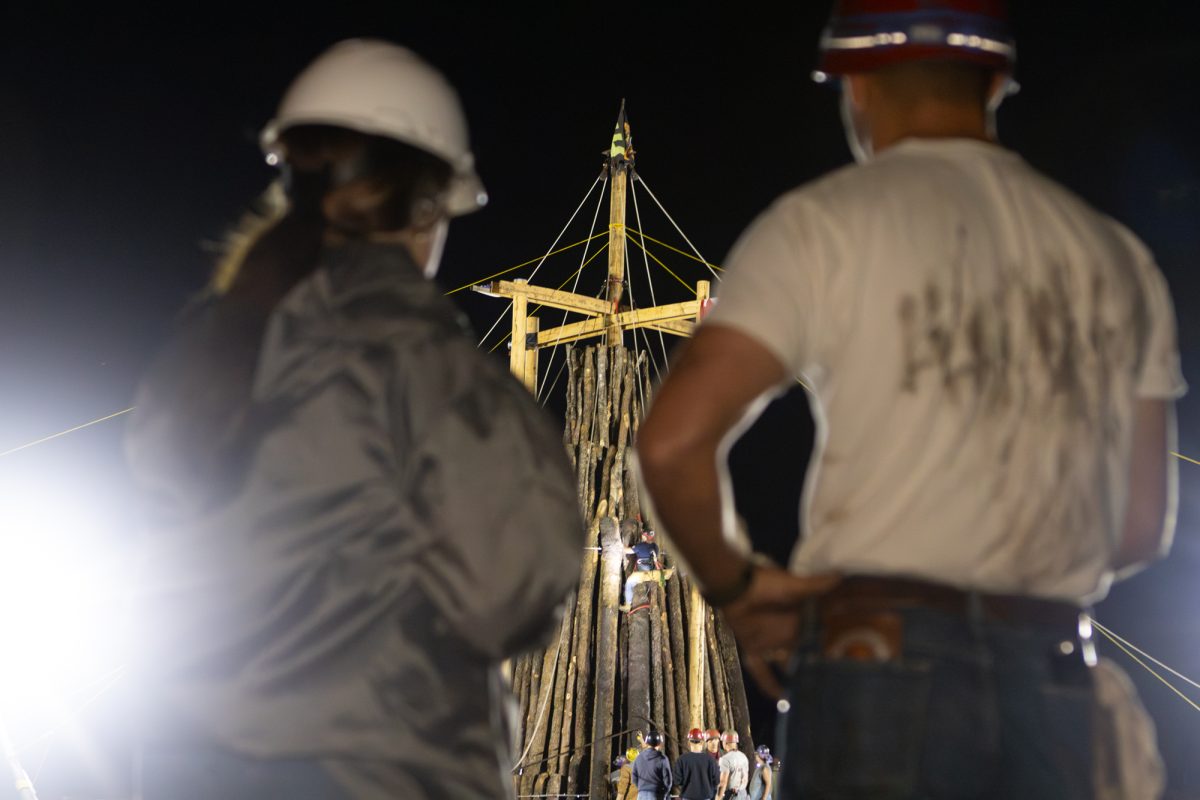Edit: Lindsey LeBlanc was referred to as founder and executive director when in fact is only attributed to just executive director.
On April 29, at 5:30 p.m., the Agrilife Center glowed with nervous inertia. A cream runway, a teal-ribboned banquet table and boomerang lights from a high-raised ceiling set the stage for an innovative, vulnerable, bold show. The Sexual Assault Resource Center, or SARC, presented a fashion show answering the question, “What were you wearing?” during “Shatter: A Survivor Fashion” at the Shirley and Joe Swinbank ‘74 AgriLife Center.
Lindsey LeBlanc, executive director of SARC, explained the purpose and origin of the event.
“‘Shatter: A Survivor Fashion’ was inspired by a New York show where survivors wore clothing from their assault. We wanted to be bold in 2023 and show that clothes don’t mean consent,” LeBlanc said.
The models wore diverse outfits, each with a unique background and story to tell.
The presentation before the runaway appearance said someone is assaulted every 68 seconds in the U.S., so by the end of the show, 75 people would have been victims. The show opened with an outfit from the grandaughter of Linda Castoria Roedel, a pioneer and the longest-standing executive of SARC. Many models wore typical college student attire: athletic shorts, oversized shirts and Vans sneakers. Other models wore teal scrubs, mint-colored clothes and black pajamas.
“We’ll have all kinds of clothing tonight, from jeans and T-shirts to pajamas to scrubs, to show that most survivors did not wear short, skimpy skirts,” LeBlanc said. “The fashion show demonstrates that clothes don’t give anyone the right to sexually assault you.”
The audience applauded the models, wiping tears from their eyes as some said, “We hear you, we see you and we won’t be silent.” After the show, attendees hugged and congratulated the models. Felicia Benford, one of the attending models, wore a blue military outfit with shiny medals and a stoic poise.
“Having a voice is powerful, not just for me but for everyone in the military,” Benford said. “It’s a way to let them know they’re not alone when this happens, that people love, support and believe them – that they are not alone. I’m so glad we don’t have to be silent anymore.”
In a purple shirt with a picture of his loved ones reading Golden Girls, Sedrick Gilbert modeled for Shatter Fashion Show. The walking cane for Gilbert’s partial paralysis didn’t stop him from walking down the aisle with pep and cheer, summingup his triumph in two breathless words: “It’s freedom.”
“SARC has helped me find the healing that eluded me for most of my life as a victim of childhood molestation,” Gilbert said. “From a victim to a survivor, I’m now a father walking down that runway.”
In SARC’s “Shatter: A Survivor Fashion,” models and their supporters come together to reclaim the narrative of sexual assault and stigmas surrounding victim shaming. By walking down the runway, victims, models and organizations like SARC walk toward a better future for survivors, one step at a time.
As he left, Gilbert challenged a common phrase with a profound message: “there is light at the end of the tunnel.”
“If you see someone flickering, reach out,” Gilbert said. “We often hear when we face adversity, tribulations, challenges or betrayal, to hold on because there’s a light at the end of the tunnel. But we’ve already done a lot to get there. If you see someone struggling, bring the light to them and help them find their light.”









